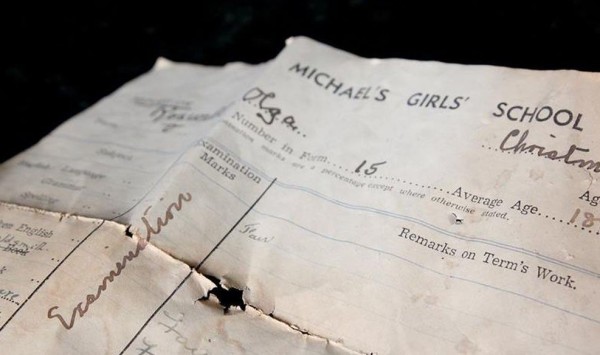THE MISSING CORNERS OF BED-STUY (1941)
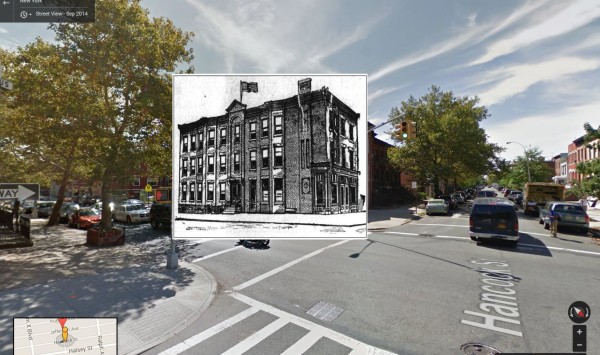
******************************************************************************************************************************** Brownstone Detectives investigates the history of our clients’ homes. The story you are about to read was composed from research conducted in the course of one of those investigations. Do you know the history of YOUR house? ******************************************************************************************************************************** So many of our corner buildings are missing. If you walk around any neighborhood that was built-up in the late 19th/early 20th century, you’ll find that many of these “end-lot” buildings did not survive the “down” periods of Brooklyn history. Compared to their smaller 1- and 2-family homes that have historically surrounded them, these larger apartment buildings have had a much more difficult time staying maintained and holding on to their tenants. Largely due to costs, the maintenance and upkeep has gone first, followed by the disappearance of the tenants – then the buildings themselves. Many of these buildings have been torn down, actually, since the 1980s – some as recently as 7-10 years ago. Sadly, we even see “tear-down” candidates which have surprisingly lasted into the present century – those buildings which, to a builder, would be cheaper to tear down than to renovate. If you want to see what these old “disappeared” apartment buildings look like, there is a deteriorating example that sits today at the corner of Malcolm X Boulevard and Macon Street. This one is already on the auction block and, sadly, will struggle to survive into the next decade. THE LOTS OF BED-STUY One Brooklyn neighborhood where empty corner lots abound is Bedford-Stuyvesant. These lots tell […]
THE CRUMBLING OF MACON & MALCOLM
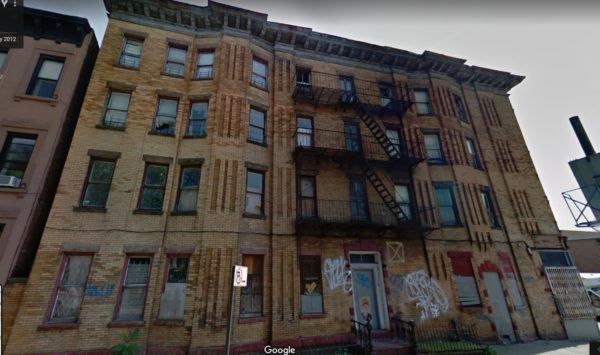
******************************************************************************************************************************** Brownstone Detectives investigates the history of our clients’ homes. The story you are about to read was composed from research conducted in the course of one of those investigations. Do you know the history of YOUR house? ******************************************************************************************************************************** (This post has been updated as of 8 February 2021.) The apartment building at the corner of Malcolm X Boulevard and Macon Street, No. 265 Malcolm X Blvd/546 Macon Street, which was constructed ca. the 1890s, has experienced an increased deterioration in the past 20 years. Although we don’t have a current snapshot of the building, the Department of Buildings notes that there is a sidewalk shed there, the existence of which was likely due to a failure to maintain building (i.e., falling glass, mortar, cornice, &c.). The building is currently owned by the Mission Field Church. The property has 12 complaints and 33 open violations. See in pictures how the structure has deteriorated over just the past ten years. Follow @BrownstoneDetec Share ———————————————————————————————————————– The Brownstone Detectives Brownstone Detectives is an historic property research agency. Our mission is to document and save the histories of our clients’ homes. From our research, we produce our celebrated House History Books and House History Reports. Contact us today to begin discovering the history of your home.
OCEAN HILL VS. OCEAN HILL
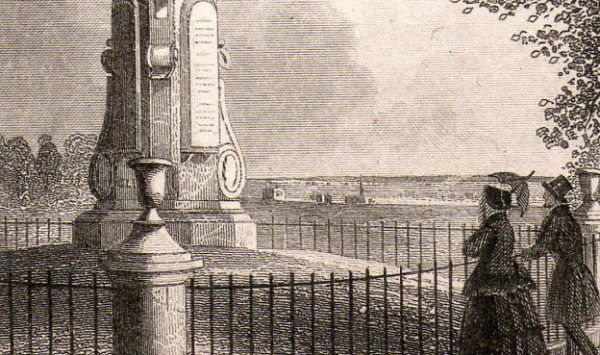
******************************************************************************************************************************** Brownstone Detectives investigates the history of our clients’ homes. The story you are about to read was composed from research conducted in the course of one of those investigations. Do you know the history of YOUR house? ******************************************************************************************************************************** Before there was Ocean Hill, there was…Ocean Hill…. Researching the history of this Brooklyn moniker, though, points you in the direction of two very different places with two very different histories. There is the original Ocean Hill in Green-Wood Cemetery, a geographic location used famously by George Washington during the American Revolution. And then, there is the Ocean Hill in the eastern section of Bedford-Stuyvesant, created by developers in 1860s Bushwick. The only characteristic the two places have had in common – other than the name – was a view of the ocean from their perches. But, now, even that is gone for one of them. OCEAN HILL – GREEN-WOOD CEMETERY Ocean Hill in Brooklyn’s City of the Dead, Green-Wood Cemetery, is likely as old as the cemetery itself, which dates from 1838. While it was not likely known as such during the American Revolution, the high vantage point was used by George Washington before the Battle of Brooklyn to observe the British forces, which were gathering to the south (and which would subsequently drive him out of New York). Ocean Hill according to Green-Wood Illustrated (issue 1), “is one of the most elevated spots in the Cemetery,” and “it occupies the north-eastern corner of the grounds.” “The sea itself,” the […]
WHEN BROOKLYN WAS (PRE-) FAB (1946)
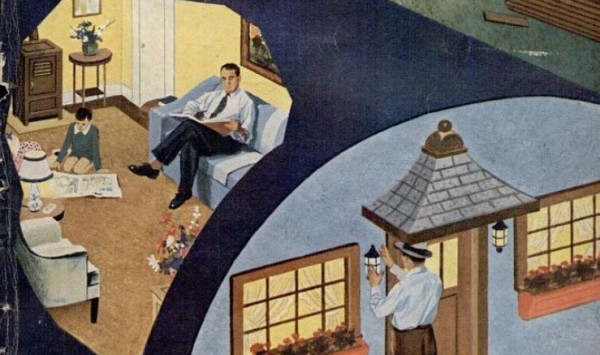
******************************************************************************************************************************** Brownstone Detectives investigates the history of our clients’ homes. The story you are about to read was composed from research conducted in the course of one of those investigations. Do you know the history of YOUR house? ******************************************************************************************************************************** When Johnny came marching home again – he found a housing shortage. As World War II ended right on the tail end of the Depression, the City of New York realized it had a crisis on its hands. Relatively little housing had been built in the previous 15 years and suddenly, with the war winding down, veterans would be returning en masse to a “smaller” city. Robert Moses proposed the temporary solution that seemed to perfectly address the veteran housing shortage – quonset huts. Servicemen would certainly be familiar with them – those curved corrugated “shacks” so familiar to the boys who fought in the Pacific. Used there as quickly built administrative offices and barracks, they were the solution for an army “on-the-go.” But would veterans want to live in them – again? BROOKLYN’S HUTS GO UP In Brooklyn, after much heated debate as to what to build, where, and for how much, acres of land in Canarsie, Jamaica Bay, and the area along the Belt Parkway in the south of Brooklyn, were all selected upon which to build temporary public housing in the form of the Federal surplus quonset huts. These structures, with their curved, corrugated roofs, potbellied stoves in each living room for heat, and a common ground between […]
A CHILD SNATCHING ON CLASSON (1875)
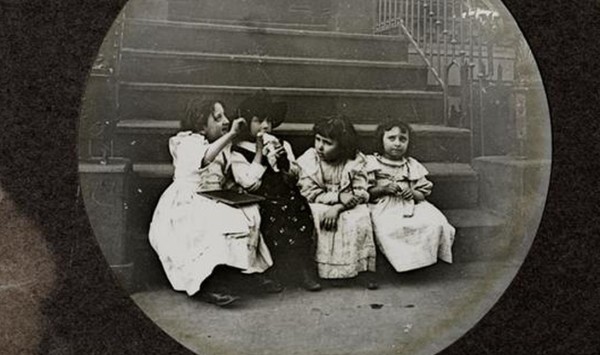
******************************************************************************************************************************** Brownstone Detectives investigates the history of our clients’ homes. The story you are about to read was composed from research conducted in the course of one of those investigations. Do you know the history of YOUR house? ******************************************************************************************************************************** He was “large.” He was “repulsive looking.” And he wanted to steal a child. And so, when Michael Kelly, of No. 22 Franklin Avenue, heard the joyous amusements of a number of young children upon a stoop at No. 208 Classon Avenue, he was resigned that he should have one. Ascending to where they were, he seized little Josephine Carter, aged 3 years, and “despite her cries of alarm, began a hasty retreat.” As he reached the bottom step and turned to flee down the walkway, little Josephine’s head knocked violently against the iron railing, causing her to cry all the more loudly. The children who remained on the stoop, “their playmate having been removed so from their midst, were all terrified, and began to cry in concert.” This crying attracted the attention of a Mrs. Hartley, who resided next door at No. 206 Classon. She, “supposing there had been an accident of some sort, hastened to the street just in time to see Kelly running off with the little girl.” THE CHASE “Very pluckily she followed him for nearly half a block and finally overtook him. Demanding the instant release of the child, she wanted to know why he was carrying it away.” Kelly, though, pretended to be deaf and […]
TRAILING A BROOKLYN SNEAK THIEF (1885)
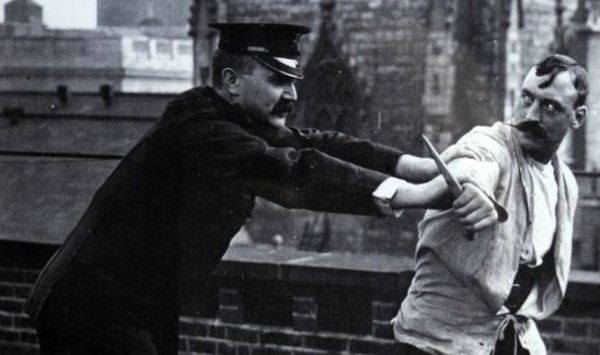
******************************************************************************************************************************** Brownstone Detectives investigates the history of our clients’ homes. The story you are about to read was composed from research conducted in the course of one of those investigations. Do you know the history of YOUR house? ******************************************************************************************************************************** (From The Brooklyn Daily Union of Thursday, 25 June 1885.) “Two Jimmies and a Lot of Skeleton Keys and Lock Picks in His Possession – After Surveying the Residence of the Superintendent of Police He Goes Elsewhere and is Caught at Work. ” A few days ago a sneak thief, who got into a house in Hart street, was seen by a woman living on the opposite side of the street when he was leaving. She furnished Captain McLaughlin with a description of the man, which was subsequently given to Detectives Kelly and Druhan, of the Gates avenue station. Yesterday afternoon Kelly and Druhan left the station together and on looking up the street, not 200 feet away, saw a man who answered the description in every particular. The man was near Marcy avenue, and the detectives got out of the way until he passed them, and then followed in his footsteps. He went up Madison street, then to Tompkins avenue, Putnam avenue and finally to Bedford. The detectives by jumping on cars and running in and out of stores had become separated, but Kelly kept the man in sight, and did not let him get far away from him. The man went up Bedford avenue, out of the Ninth and […]
CALVIN COOLIDGE & THE BUNNY HUG (1922)

******************************************************************************************************************************** Brownstone Detectives investigates the history of our clients’ homes. The story you are about to read was composed from research conducted in the course of one of those investigations. Do you know the history of YOUR house? ******************************************************************************************************************************** Vice-President Calvin Coolidge came to the Eastern section of Stuyvesant Heights one night late in 1922 to stump for the local Republican senator ahead of the mid-term elections. And in so doing, he would wind up in a nite club known for its bawdy dancing and raids on its illegal booze sales. It was the country’s first “working girl’s model dance hall,” The Arcadia. Dedicated specifically, at the time it was built in 1912, to “proper” dances for working girls, the hall – located at the corner of Halsey Street and Saratoga Avenue, across the street from Saratoga Park – had been supported by proponents who had lobbied successfully for anti-tango legislation, designed to outlaw “the turkey trot and other sensational dances.” For several years, the hall was a chaste facility which forbid “bunny-hugging” and tangoing, and kept a number of dance monitors on the dance floor to enforce these rules. You broke them once and you were kicked out for good – never allowed to return to the popular dance spot. Ten years later, though, it was the era of Prohibition, and the hall’s reputation had sunken somewhat in the estimation of its neighbors. Being the largest dance hall in the area, though, Vice President Calvin Coolidge would use it […]
A HEART FROM BED-STUY’S GIANTESS (1898)
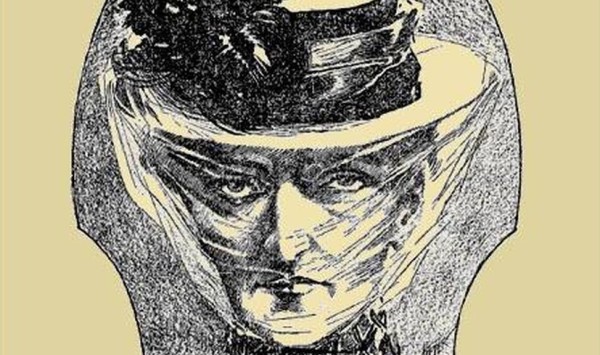
******************************************************************************************************************************** Brownstone Detectives investigates the history of our clients’ homes. The story you are about to read was composed from research conducted in the course of one of those investigations. Do you know the history of YOUR house? ******************************************************************************************************************************** The history of Bedford-Stuyvesant embraces many giants. There is Jackie Robinson, Jackie Gleason, and Chris Rock, just to name a few. Bedford-Stuyvesant, though, probably claims only one giantess. It most certainly claims only one murdering giantess – and, no doubt, claims the first murdering giantess to be put to death in the electric chair. Martha Place, who lived for a time in a brick townhouse at 598 Hancock Street, was that giantess. She stood 6 foot 7 inches tall and – around Valentine’s Day of 1898 – had become the talk of Stuyvesant Heights. But her popularity was not due to her loving, endearing ways. Quite the opposite. It was because she had committed such a brutal murder that year that the State of New York considered, for the first time, putting a woman to death in their new-fangled electric chair. The electric chair had been adopted by the State of New York just ten years previous. And in the decade to follow, just 25 men had been executed with it. This would be the first time, though, that “Old Sparky” would snuff out the life of a woman. Indeed most people could not believe it was about to happen. A jealous and volatile woman, Martha had had the “temper of […]
THE LURE OF A FEDDERS HOUSE (1902)
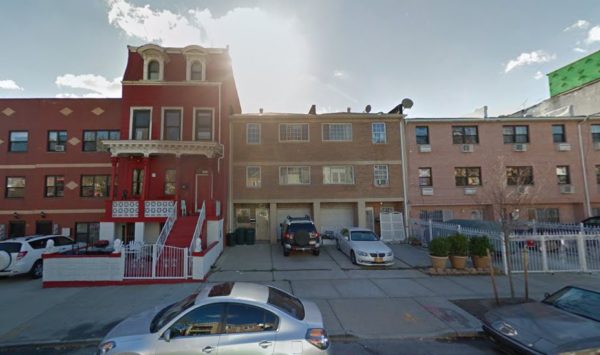
******************************************************************************************************************************** Brownstone Detectives investigates the history of our clients’ homes. The story you are about to read was composed from research conducted in the course of one of those investigations. Do you know the history of YOUR house? ******************************************************************************************************************************** (In 1868, Quincy Street [between Bedford and Nostrand avenues] boasted of rows of beautiful Victorian wood-frame homes. The row pictured above contained houses like the red building above.) In 1902, luxurious wood frame houses that had been built closer to the middle of the century before were beginning to show their wear – not just in their physical appearances, but also within the rental rolls that such structures had previously been able to command. Since 1868, when the above house (third from left) was built, brownstone and limestone fronted houses had come into vogue, attracting those with means to buy and rent them, while forcing owners of the antiquated frame houses, due to the old issue of supply and demand, to reduce their rents – significantly. “There is a row of three story frame houses on Quincy street, between Bedford and Nostrand avenues which illustrates the demand for houses with a modern style of front,” noted the Brooklyn Daily Eagle. “The Quincy street houses were built in 1868 by a well known architect and builder. They are 20 feet wide on an extra deep lot. The accompanying picture shows the appearance of the houses (no photograph was actually printed with this article). They sold for $9,000 each upon completion. Those who […]
